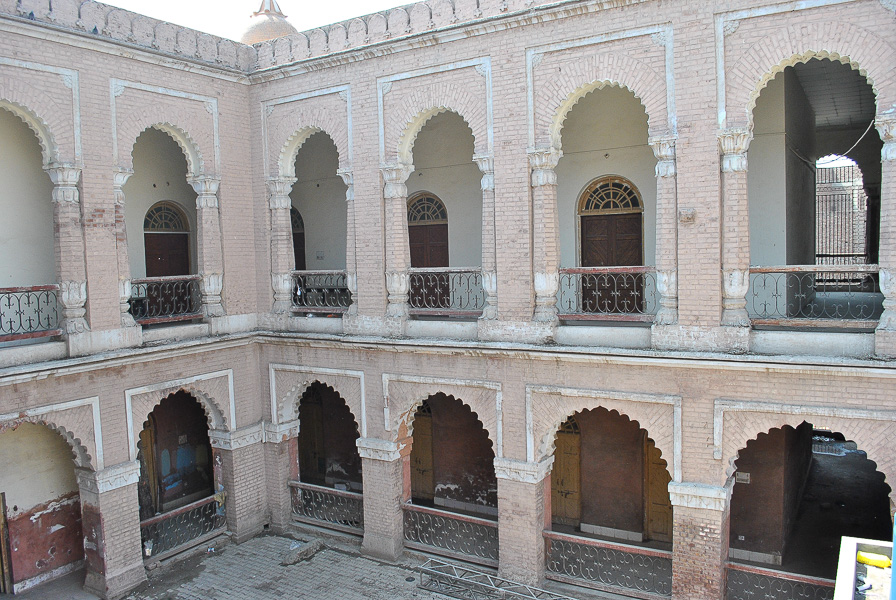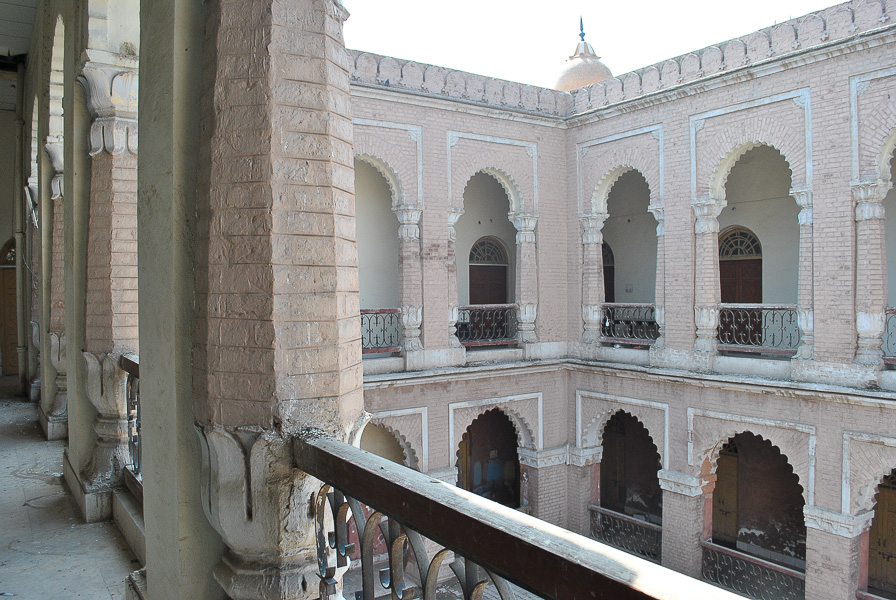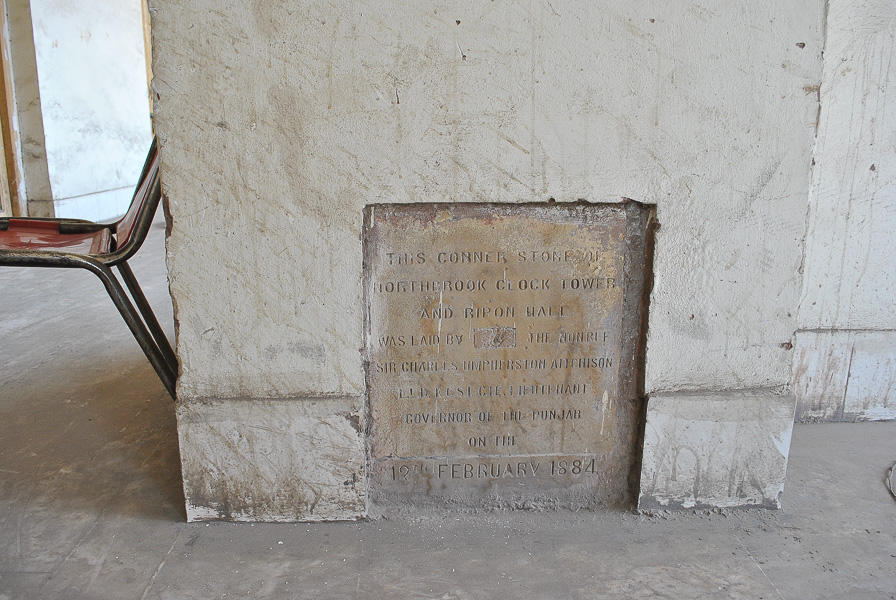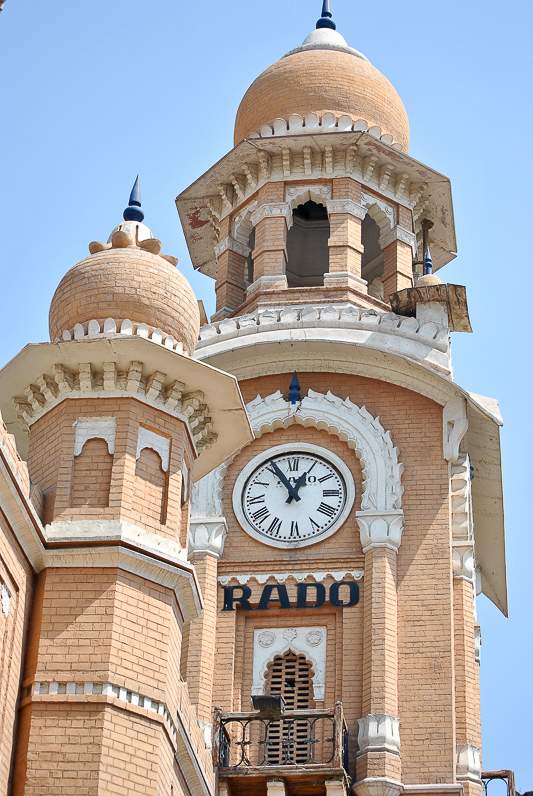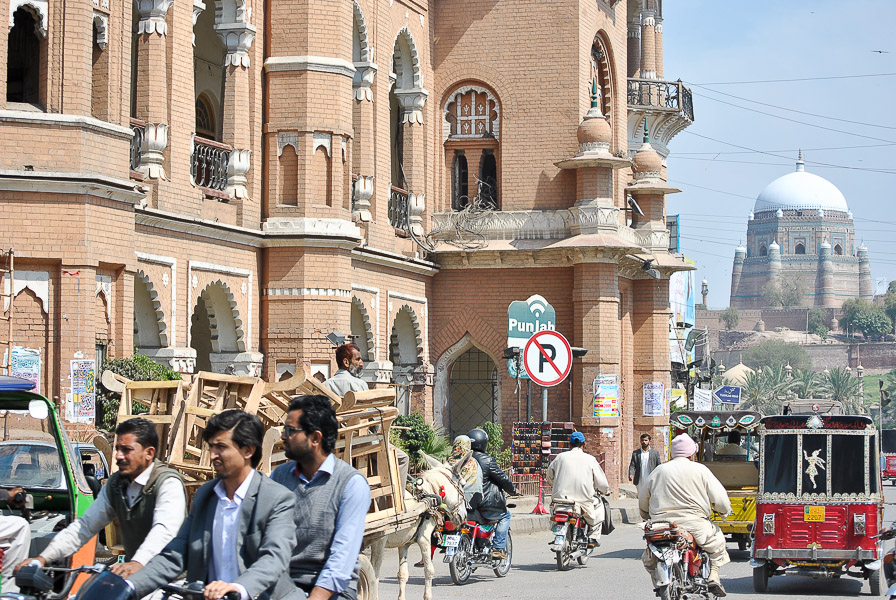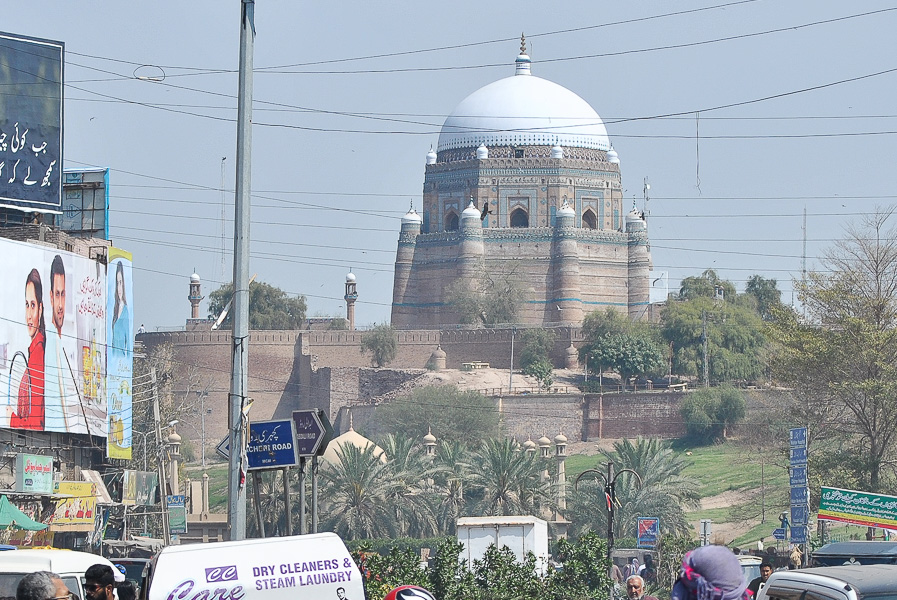Ghanta Ghar Clock Tower
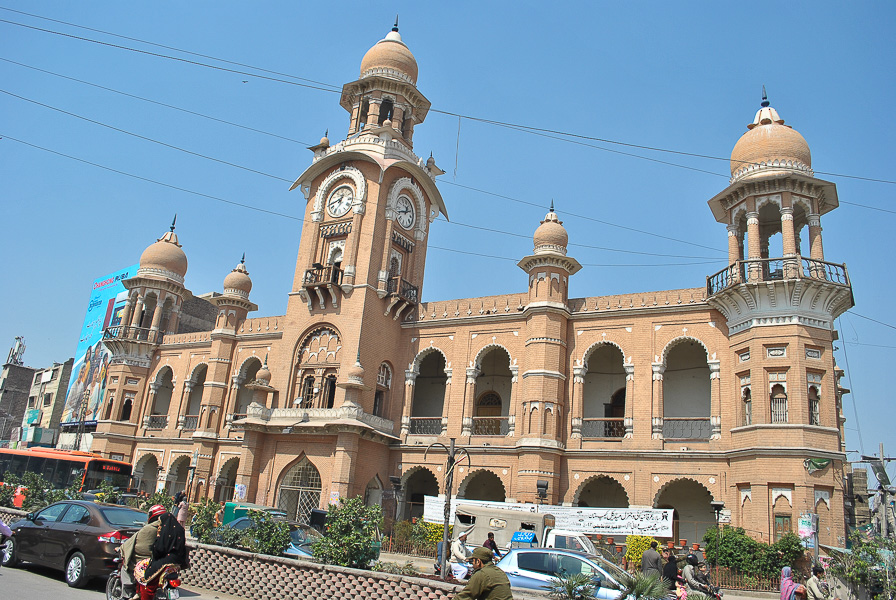
La torre del reloj de Ghanta Ghar se encuentra en el centro de Multan, directamente al oeste de la antigua fortaleza de la ciudad, e inmediatamente al otro lado de la calle de una rotonda importante donde convergen varias calles. Construido entre 1884 y 1888, es un edificio de estilo indo-sarraceno que se utilizó como sede del gobierno municipal bajo la dirección del Raj británico, que gobernó el imperio británico de la India entre 1858 y 1947.
Los británicos habían tomado el control de Multan en 1849 del colapso del Imperio Sikh, comenzando 100 años de dominio británico sobre la ciudad. Incluso en 1884, casi dos generaciones después del asedio que ganó la ciudad para Gran Bretaña, grandes áreas de Multan permanecieron en ruinas. Se tomó la decisión de construir un gran edificio de oficinas municipales sobre las ruinas de la haveli (mansión) de Ahmad Khan Sadozai, que había sido destruida durante el asedio. La construcción duró unos cuatro años y el edificio recibió el nombre de Ripon Hall en honor al primer marqués de Ripon, que gobernó como virrey de la India de 1880 a 1884. La característica central en la fachada sur del edificio, su torre del reloj, fue apodada Northbrook Tower en honor al primer conde de Northbrook, el ex virrey que sirvió entre 1872 y 1876.
La sala fue construida en el estilo indo-sarraceno, que fue bastante popular en las colonias del sur y sureste de Asia de Gran Bretaña (para ver ejemplos de este estilo, consulte la Puerta de la India o la Mezquita del Sultán y la Mezquita Abdul Gafoor de Singapur). El estilo fue popularizado por arquitectos británicos que sintetizaron los estilos gótico y neoclásico de la era victoriana con las tradiciones musulmanas del Raj en la India. Las características distintivas de este estilo incluyeron el uso de arcos abovedados, aleros salientes y una multitud de cúpulas, torretas y cúpulas en la azotea, así como el uso de materiales de construcción nativos como piedra arenisca y mármol.
Tras la liberación del dominio británico en 1947, la sala pasó a llamarse Jinnah Hall, pero siguió funcionando como centro administrativo. A medida que la ciudad crecía, el espacio para oficinas se volvió escaso y la administración de la ciudad se mudó a un edificio diferente. El edificio permaneció vacío durante varias décadas y sus famosos relojes ya no daban la hora. Sin embargo, en 2011, la empresa de relojes suiza Rado renovó los relojes e instaló baterías de energía solar para garantizar una energía ininterrumpida. Esto coincidió con un impulso para gastar 40 millones de rupias paquistaníes para convertir el edificio en un museo, trabajo que estaba completado en un 50% en 2011 según un artículo de Dawn (como se indica a continuación en la bibliografía). Sin embargo, a partir de 2019, el edificio permanece vacío de exposiciones, pero parece estar en buenas condiciones físicas en general, aunque partes del interior permanecen en ruinas.
The Ghanta Ghar clock tower stands in central Multan directly west of the city's old fortress, and immediately across the street from a major roundabout where a number of streets converge. Built from 1884-88, it is an Indo-Saracenic style building which was used as the headquarters of the municipal government under the direction of the British Raj, who ruled the British Indian empire from 1858-1947.
The British had taken control of Multan in 1849 from the collapsing Sikh Empire, beginning 100 years of British rule over the city. Even in 1884, almost two generations following the siege that won the city for Britain, large areas of Multan remained in ruins. The decision was made to construct a grand municipal office building over the ruins of the haveli (mansion) of Ahmad Khan Sadozai, which had been destroyed during the siege. Construction took about four years and the building was named Ripon Hall in honor of the 1st Marquess of Ripon, who ruled as Viceroy of India from 1880-84. The central feature on the building's south facade—its clock tower—was dubbed Northbrook Tower in honor of the 1st Earl of Northbrook, the former Viceroy who served from 1872-76.
The hall was constructed in the Indo-Saracenic style which was quite popular throughout Britain's south and southeast-Asian colonies (for examples of this style, see the Gateway of India, or the Sultan Mosque and Abdul Gafoor Mosque of Singapore). The style was popularized by British architects who synthesized Victorian-era Gothic and Neo-Classical styles with the Muslim traditions of the Raj in India. Hallmarks of this style included the use of cusped arches, projecting eaves, and a multitude of domes, turrets, and cupolas on the rooftop, as well as the use of native building materials such as sandstone and marble.
Following liberation from British rule in 1947, the hall was renamed Jinnah Hall but continued to function as an administrative center. As the city grew, office space became scarce and the city's administration moved to a different building. The building remained empty for several decades and its famed clocks no longer told the time. However, in 2011 the Swiss watch company Rado refurbished the clocks and installed solar-powered batteries to ensure uninterrupted power. This coincided with a push to spend 40 million Pakistani rupees to turn the building into a museum, work which was about 50% complete by 2011 according to an article in Dawn (as noted below in the bibliography). However, as of 2019 the building remains empty of exhibitions but appears to be in generally sound physical condition, though portions of the interior remain dilapidated.
